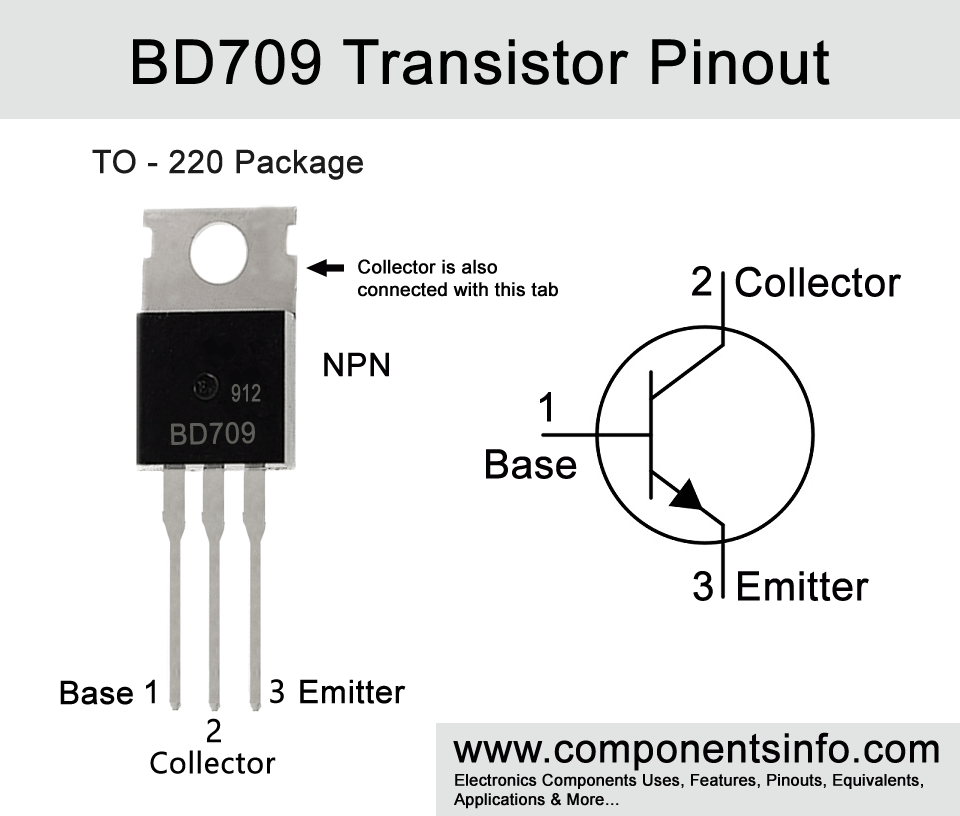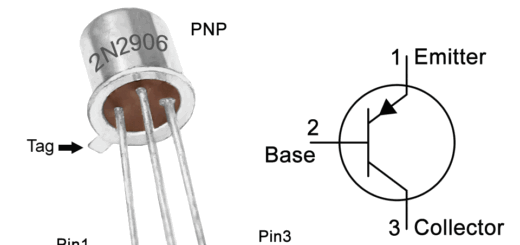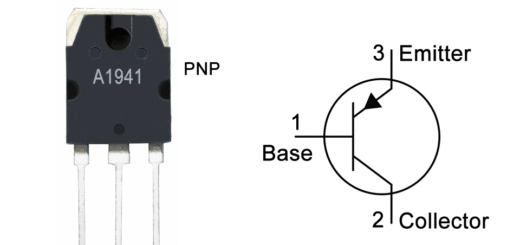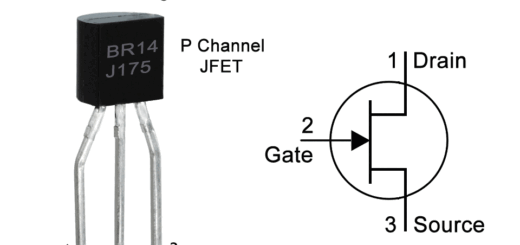BD709 Transistor Pinout, Equivalents, Applications, Features, Explanation and More
BD709 is an NPN power transistor, this post describes BD709 transistor pinout, equivalents, applications, features, explanation, safe operating guidelines and more.
Absolute Maximum Ratings:
- Package Type: TO-220
- Transistor Type: NPN
- Max Collector Current(IC): 12A
- Max Collector-Emitter Voltage (VCEO): 80V
- Max Emitter-Base Voltage (VEBO): 5V
- Max Base Current (IB): 5A
- Max Collector Power Dissipation (Pc): 75W
- Minimum & Maximum DC Current Gain (hFE): 15 to 150
- Max Storage & Operating temperature Should Be: -65°C to 150°C
NPN Complementary:
PNP Complementary of BD709 is BD710
Replacement and Equivalent:
BD711, BDW42G, ECG2343, 2SD2639, NTE2343.
BD709 Transistor Explained / Description:
BD709 is a TO-220 package NPN power transistor designed to be used in switching and power linear applications. The absolute maximum ratings of the transistor are collector-emitter voltage of 80V, collector current is 12A, emitter-base voltage is 5V, base current is 5A, storage temperature is from -65°C to 150°C and junction temperature is 150°C.
Looking at the pin layout of the transistor the first pin is Base, second pin is Collector and the third pin is Emitter.
It is the transistor of BD7xx series which also contains other transistors like BD705, BD707 and BD711. The complementary transistor series of these transistors are also available which are BD706, BD708, BD710 and BD712. The other transistor in the series of BD709 can also be used as an alternative to BD709 but first you have to check how much load BD709 is handling in your circuit and select you alternative according to your voltage requirements. But if you want to replace it BD711 then you can easily do that before BD711 has a higher voltage than BD709.
Where We Can Use it & How to Use:
As mentioned above the transistor is designed to be used in switching and linear applications so you can use it in controller circuits, inverters, regulators, amplifiers, etc.
Using procedure of the transistor is same as we use any other BJT transistor by applying a signal to its base and getting the output from the collector in amplifier circuits or same collector is used to drive load in switching circuits. The emitter pin will be connected to the ground most of the time, you have to use the passive components where they are required depending on which mode you are using the transistor like in switching mode or amplifier mode.
Applications:
DC-DC Converters
Voltage regulators
Battery Charger Circuits
Motor Driver Circuits
Audio Amplifiers
Lighting Control Circuits
Power Supplies
Safe Operating Guidelines:
Here are the safe operating guidelines of the transistor.
- To safely operate the transistor always use it 20% below from its absolute maximum ratings.
- The maximum collector current is 12A but to operate in safely we will not more than 9.6A.
- Same as in collector-emitter voltage, the maximum VCEO is 80V but we will
- The maximum collector-emitter voltage 100V so we will not drive load of more than 64V.
- A suitable heatsink should always be used with the transistor.
- Always store or operate the transistor at temperatures above -65°C and below 150°C.
Datasheet:
To download the datasheet just copy and paste the below link in your browser.
https://www.silicon-ark.co.uk/datasheets/bc177-bc178-bc179-datasheet-sgs-thomson.pdf



